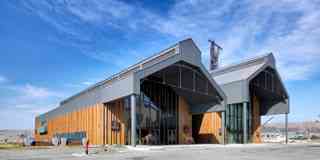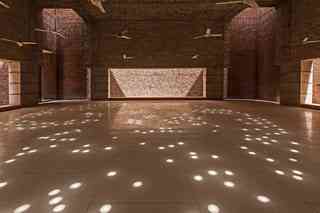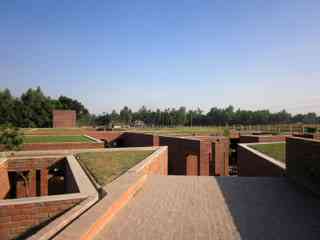
Established by Aga Khan IV in 1977, the Aga Khan Award for Architecture has been given every three years since 1980, honoring projects around the world that not only excel in architectural refinement but also make a distinct humanitarian impact. The competition’s jury pays special attention to the areas of social housing, community development, historic preservation, reuse, conservation, landscape design , and environmental improvement. This week a short list of 19 nominees was released, and a winner will be chosen in the fall. From a floating schoolhouse in Nigeria to a massive train station in Morocco, the projects range widely in scale and budget and are located in 14 different countries. They represent a breed of architecture in which the human being comes first and good design naturally follows. See the structures competing for the 2016 prize of $1 million.
For more information visit akdnrg .
Shown: New Power Station, 2013 (Baku, Azerbaijan) This former power station has transformed, through a series of major renovations, into an event and recreation space that serves its community while honoring the building’s history and green waterfront context.

Bait Ur Rouf Mosque, 2012 (Dhaka, Bangladesh)
Inspired by the region’s historic architecture, this mosque’s light and porous look was achieved with a surprisingly dense material—brick.

Friendship Centre, 2011 (Gaibandha, Bangladesh)
A training center for a local NGO, this structure serves as the starting point for many hoping to serve the community in Bangladesh. The architectural style is drawn from ruins of Buddhist monasteries.
Micro Yuan’er, 2014 (Beijing)
This plywood children’s library is nestled within an existing structure in a centuries-old courtyard.
Superkilen, 2011 (Copenhagen)
In taking suggestions from the public for the design, the architects of this community center sought to highlight the neighborhood’s rich diversity. The center houses objects representing over 60 nationalities.
Manouchehri House, 2010 (Kashan, Iran)
This 19th-century merchant home was painstakingly restored using traditional techniques and transformed into a boutique hotel promoting careful historic preservation.
Tabiat Pedestrian Bridge, 2014 (Tehran, Iran)
What could have been a simple pedestrian bridge was designed as a destination in itself: It serves as a meeting place for locals seeking a calm place surrounded by greenery.
40 Knots House, 2014 (Tehran, Iran)
This middle-income residence is far from cookie-cutter. Inspired by Persian carpets, the woven brick façade sets the building apart.
Photo: AKTC/Cemal Emden
Originally slated for construction inside a nature reserve, the academy was instead built in an abandoned quarry nearby to protect the land.
Bunateka Libraries, 2009–12 (Various Locations, Kosovo)
These tiny wood libraries, built all around Kosovo, provide reading materials for children.
Issam Fares Institute for Public Policy and International Affairs, 2014 (Beirut)
This think-tank headquarters at the American University of Beirut fits seamlessly into the campus, keeping a low profile so as not to cut off views of the Mediterranean or disrupt the university’s landscaping.
Guelmim School of Technology, 2011 (Guelmim, Morocco)
Covered walkways and water-conscious landscaping are just some of the design choices made specifically for the desert climate.
Casa-Port New Railway Station, 2014 (Casablanca, Morocco)
This massive train station pays homage to Morocco’s architectural history while providing residents with a modern, high-tech transit hub.
Makoko Floating School, 2013 (Lagos, Nigeria)
This floating A-frame schoolhouse was built as a prototype in a region with a lack of schools and a high risk for flooding.
Doha Tower, 2012 (Doha, Qatar)
The tower’s mesmerizing façade shields the structure from intense heat.
King Fahad National Library, 2013 (Riyadh, Saudi Arabia)
By entirely encasing the original library within a new structure, architects were able to conserve building materials while still creating an inspiring and dramatic new space.
Thread: Artist Residency and Cultural Centre, 2014 (Sinthian, Senegal)
Serving a series of rural communities, this space functions as a center for cultural exchange and education and also houses two artists-in-residence.
Nasrid Tower Restoration, 2010 (Almeria, Spain)
Made of light materials, the new additions to this 13th-century tower are easy to identify but do not attempt to overshadow the original structure.
Ceuta Public Library, 2013 (Ceuta, Spain)
Visitors to this library will discover that they are sitting on an archaeological hot spot. Architects designed around the site, both protecting and showcasing it.
